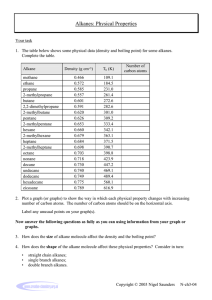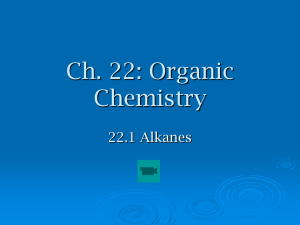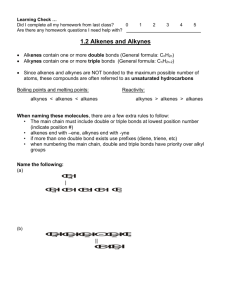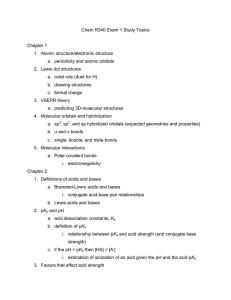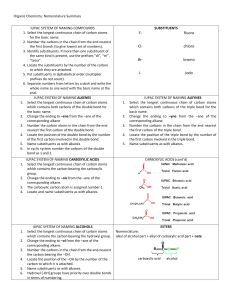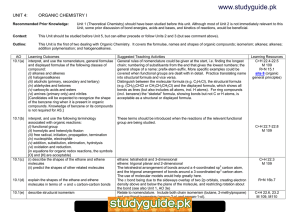FAMILIES IN ORGANIC CHEMISTRY
advertisement
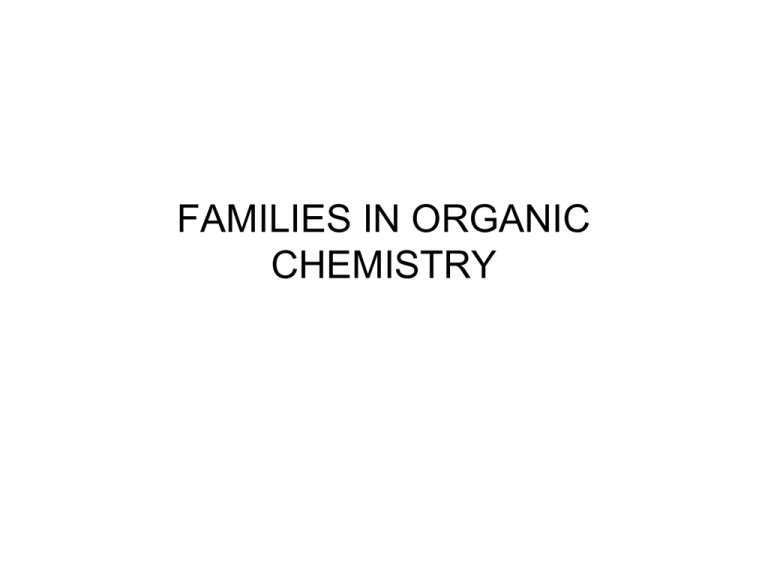
FAMILIES IN ORGANIC CHEMISTRY • Hydrocarbon contains hydrogen and carbon only • Alkanes have a C – C single bond • Alkenes have a C = C double bond • Alkynes hace a C = C triple bond Homologous series • • • • • Series of compounds Uniform chemical type, Has a general formula Similar method of preparation, Differ from each other by CH2 ALKANES • • • • • • contain only hydrogen and carbon carbons all have single bonds saturated named using - ane at end methane, ethane, propane butane …….. Physical properties – sweet smell, colourless • Found naturally occurring • • • • 1st four alkanes are gases. Next 12 are liquids. Higher members are waxy solids. Draw first five alkanes. Alkyl groups • Groups are named from the corresponding alkane, • Compounds are named so that these groups are attached to the lowest number carbon, • If alkyl groups are attached, they come alphabetically in the name of the compound, Alkenes • • • • Contain a carbon = carbon double bond, Named from the corresponding alkane, Name ends in - ene, The number of the carbon where the double bond starts is put into the name. • unsaturated Alkynes • Named from the corresponding alkane. • Name ends in - yne. • Contains a C = C triple bond. • Unsaturated Preparation of ethyne • Chemicals – calcium carbide(CaC2)- (dark grey solid) and water • Word eqn: calcium carbide +water → Calcium hydroxide + ethyne • Chemical equation: • Bubbled through acidified copper II sulfate • To remove hydrogen sulfide, phosphine, and ammonia. • Sweet smell, insoluble in water, • Burns with a smoky luminous flame, in excess oxygen to produce carbon dioxide and water(chemical equation) • Note – tests for unsaturation • Bromine / water. Reddish brown turns colourless • Acidified potassium permanganate, purple turns colourless


